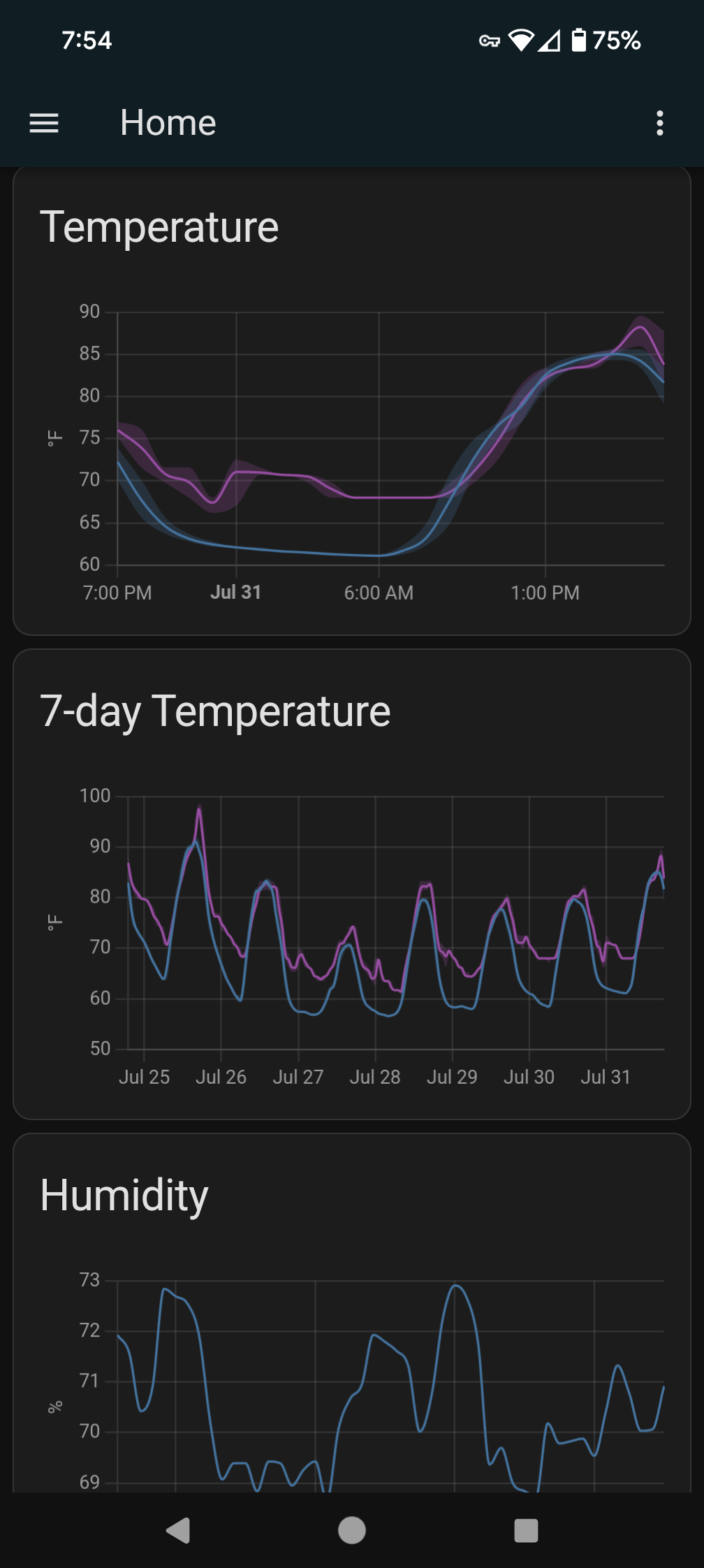

A % of customers won’t return an incorrect product so an accidental sale is still a sale. It sucks, but statistically benefits the company.
I get tricked now and then too by products that ended up not matching my search. So annoying.


A % of customers won’t return an incorrect product so an accidental sale is still a sale. It sucks, but statistically benefits the company.
I get tricked now and then too by products that ended up not matching my search. So annoying.
Totally right. Forgot what community I was in.
Don’t most? Even Fitbit does that for ages. You can select what apps to receive notifications from.
First of all, the ISP controls cable modem firmware. They have all the settings and manage the device. You don’t get much control there.
As for your question, I’d say no, for 2 reasons. First, designing that capability is expensive and modems are built for cheap reliability. Second, any hardware to spy is more useful installed in a data center accessible to their user base. There is not much point installing unnecessary tech to one endpoint.
As for router, they are beefier CPU-wise. AT&T has in the past prevented users from changing DNS settings and that could lead to lots of tasty data. Deep packet inspection is becoming more prevalent in home routers as is integration with other technologies. (EERO devices for example).
Make sure to fire up a VPN or something when you need.


Haha guess so. Misleading graphic taken out of context. That makes more sense. I never tried the excessive water method. It sounded interesting, but I refer to my point #1 above.


Yeah, took me a while to get through that paper. Pretty detailed, but a little red flag kept waving when all the results are percentages. I finally got down to the meat of the science and was pretty confused on actual levels. I still don’t have a good grasp of exactly how much iAs they measured, as the findings are adjusted for relative exposure by body weight. I suppose that’s the point of the paper, but would have been nice to have some relatable baseline to put things in perspective.
There is also a pretty large margin of error as a exposure 2.75x greater than used to calculate the results was within the same exposure limits linked to the 0.1% risk. That’s easy to add to their charts. Would have been nice.


Wow, lot to unpack here.
“Ain’t nobody got time for that.”
How much arsenic are we talking about here?
“Saving time, water, and energy” is apparently short for boil water, stand around, drain, re-boil more water using more energy, and finish cooking rice. Where is all this time saving happening?
“The margin of exposure [to arsenic] is increased to desired levels”. Hmmm I guess if you really think about it that is a true statement, but one heck of a roundabout way to say it.
I use kimai. It’s gotten much more stable over the past couple years and there is a mobile app. (I think it’s a couple bucks now, but works pretty well)
It runs in docker so it’s pretty easy to set up.
I have one customer who is pretty nuts about bills and this is the only way to track and invoice all that nonsense.


Don’t take on all that guilt. There are things we can do to limit our data, but a lot, dare I say the majority, is scraped from sources beyond your control. You may have great practices and security, but others may not, and those weaknesses or business arrangements are vectors for breaches like these.
We’re all in the same boat here.


Yup! Even units with one exhaust need 2 fans. Many standalone models even have a small 3rd fan near the condensate reservoir to re-introduce moisture, collected when chilling air, back into the exhaust so they don’t have to be drained as much.
The nice thing about inverter units is they only run the pump and fans as hard as it needs to obtain its objective. Once there, it can spin down and get much quieter. I used to have floor units and hated sleeping with those. All through the night you would get fan noise and a huge CLUNK as the compressor kicks on or off. We upgraded this year and the ramp-up is so much easier to sleep through. There is still fan noise, but much quieter and becomes white noise after a while.


While it does pull in hot air from outside, it is not cooled, but rather heated. AC units are divided with a cool side that lowers temp in a room and a hot side that extracts heat.
Warm air is used by the condenser (a radiator that collects the heat from the room) and sent back outside hotter than it sucked in.
The air on the cold side of the AC unit is recirculated into the room.


Doesn’t really apply to your setup, but I just got a u-shaped window AC from midea and it works well with home assistant. I didn’t expect it, but it also has an outside temp sensor I can read. I’ve been graphing outside temp all summer. Purple is the AC, blue is openweathermap. Ignore humidity, that is for a tropical/moss tank.

They have an indoor unit with the same wifi capability, linky so that one might work.
EDIT: you’re right, Midea compatibility isn’t standard in home assistant, nor advertised , but I added it with a custom integration. It’s been working great this summer.



data stays local for the most part. Every file you send to the cloud becomes property of the cloud. Yeah, you get access, but so does the hosting provider, their 3rd party resources, and typical government compliances. Hard drives are cheap and fast enough.
not quite answering this right, but I very much enjoy learning and evolving. But technology changes and sometimes implementing new software like caddy/traefik on existing setups is a PITA! I suppose if I went back in time, I would tell myself to do it the hard way and save a headache later. I wouldn’t have listened to me though.
Portainer is so nice, but has quirks. It’s no replacement for the command line, but wow, does it save time. The console is nerdy, but when time is on the line, find a good GUI.
Man that brings back memories. MythTV was my first venture into Linux-based systems. I got a PCI HDTV tuner card, took over my parents garage, and built a little box to make a PVR. What a fun project. I bet MythTV is a LOT easier now!
Currently, I have a silicondust tuner and run Plex in docker. Works great for my needs. I think it works with jellyfin too if you prefer that route.
Ah, thanks for the info!
Didn’t the Lemmy teams sort of fix that CSAM thing ages ago?
I remember a wave of lockdowns and hush hush related to that, soon followed by an update to Pictrs with a bunch of new docker compose settings.
My server got pooched in the update and it took me almost a month to fix partly because I had little free time.
Highly recommend SSD if just for Lemmy. Man, the syncing can take a while. I have HDD with a m.2 cache and it can still take a while. Personally, I’d go for something a little more powerful, but it’s all fun and educational.


It’s changing settings to only allow one way sync and disable deletion. The sync folder basically becomes an automatic archive destination.
They are soooo close to having this cool tool, but many feature requests have been shot down because it’s not a true sync. I get it, but it sucks too.


I use syncthing for backups including some phone files, but I’m not sure this would be good.
Syncthing devs clearly don’t want this app used as a sync-and-archive tool so all phones would have all copies and any phone can permanently delete any file. I wouldn’t trust that.
(Yes, there is a roundabout way, I do it too, but it is prone to errors and sync issues)
I second immich and backup. immich can archive as you want, and Syncthing can make backups of files.
I sort of do this because I own my domain. I generally pick an annual keyword email filters can lock on, followed by an identifier with whom I’m contacting.
It’s easy to trace if addressed get breached, especially unreported breaches, and add to a burn list if they get spammed.
Also, if I have no intention of responding I give fake info or if I need that rare password reset link I know when to look in the spam.
Yeah, using my domain is it’s self a bit trackable, but enough friends and family use it I figure poisoned data is sweet justice.
Fun fact, but for some reason old fake accounts have boomed in popularity; like data brokers with bad information bounce verifications off each other, linked it to some poor sap in another state, and snowballed into an actual profile. I’m going to use that identity as an alt profile for something someday.